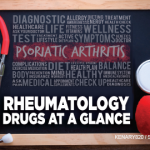The European Commission has also approved ustekinumab for treating active psoriatic arthritis in adults with an inadequate response to previous nonbiological disease-modifying antirheumatic drugs.5
Drug Safety
Fentanyl transdermal systems have undergone a labelling overhaul due to accidental exposures in children leading to serious illness and death.6 In the last 16 years, there have been 32 reported cases of accidental exposure to fentanyl, including 12 deaths and 12 additional hospitalizations. Most of these have occurred in children under the age of two years. Using long-lasting, visible ink, the FDA is requiring each patch to be clearly marked with the drug name and strength in a clearly visible color in order to help reduce accidental exposure risk. Prior ink colors varied by drug strength and were not always easy to read. Two prior public health advisories were issued by the FDA, in 2005 and 2007, related to the safe use of fentanyl patches. The FDA recommends that fentanyl patch users take precautions to reduce possible child exposure to fentanyl, and that healthcare providers may need to educate their patients regarding appropriate use and disposal of this product. Patches should be stored in a secure location that is out of children’s reach and sight. Toddlers may think the patch is a sticker, tattoo, or bandage. When using the patch, consider covering it with an adhesive film, such as Tegaderm or Bioclusive, to make sure the patch doesn’t come off the body. When using, make sure—either by touching or looking at the patch—that it is still in place. Used patches need to be appropriately discarded by being folded in half, joining the sticky sides together, and then flushed down the toilet. The FDA has recognized that there are environmental hazard concerns when patches are disposed in this manner. Healthcare providers need to explain to caregivers and patients how to appropriately store and dispose of these patches and other potentially hazardous medications to prevent inadvertent harm, especially to very young individuals.
Due to the current prescription-drug abuse problems related to misuse, abuse, overdose, and death from opioids, the FDA is mandating a requirement for labeling changes and postmarket studies to reduce the serious risks of extended release and long-acting (ER/LA) opioids.7 In doing so, FDA hopes to preserve appropriate medication access for patients who require pain management, while deterring abusers. The indication has been updated to state that ER/LA opioids are indicated for managing severe pain severe enough to require daily, around-the-clock, long-term opioid treatment and for which alternative treatment options have been inadequate. It further clarifies that, due to risks of addiction, misuse, and abuse, even at recommended doses, and because of greater overdose and death risks, the ER/LA opioids should be reserved for use in patients for whom alternative treatment options (e.g., nonopioid analgesics or immediate-release opioids) have not been effective, tolerated, or have not provided sufficient pain management. In addition, the new indication states that ER/LA opioids are not indicated for “as-needed” pain relief. The FDA is also requiring manufacturers of ER/LA opioids to conduct further studies and clinical trials. The goals of these postmarketing requirements are to further evaluate known serious risks of misuse, abuse, hyperalgesia, addiction, overdose, and death. A boxed warning has been added that chronic maternal use of ER/LA opioids during pregnancy leading to neonatal opioid withdrawal syndrome (NOWS), which may be life threatening to the infant. Once these safety labeling changes have been completed, the REMS for these products will be updated.


